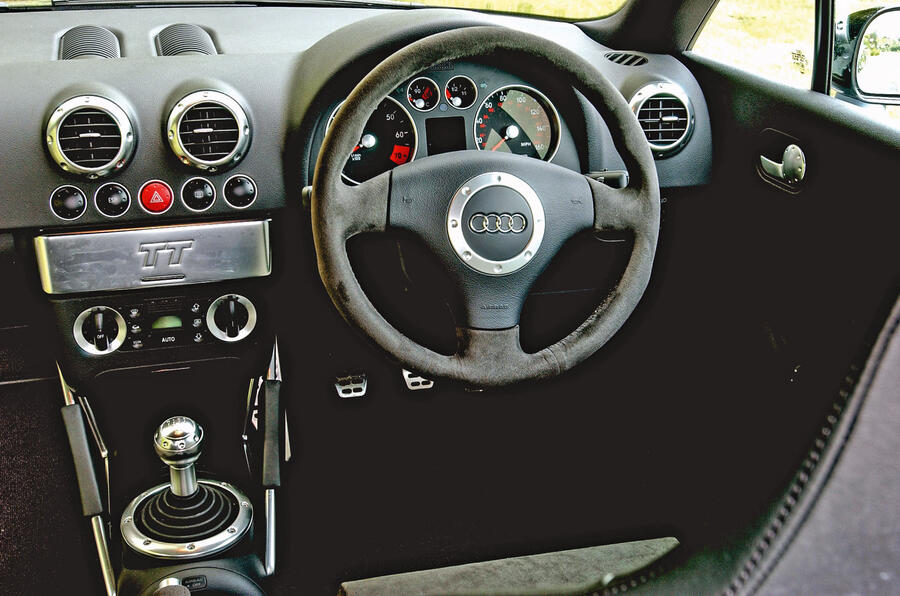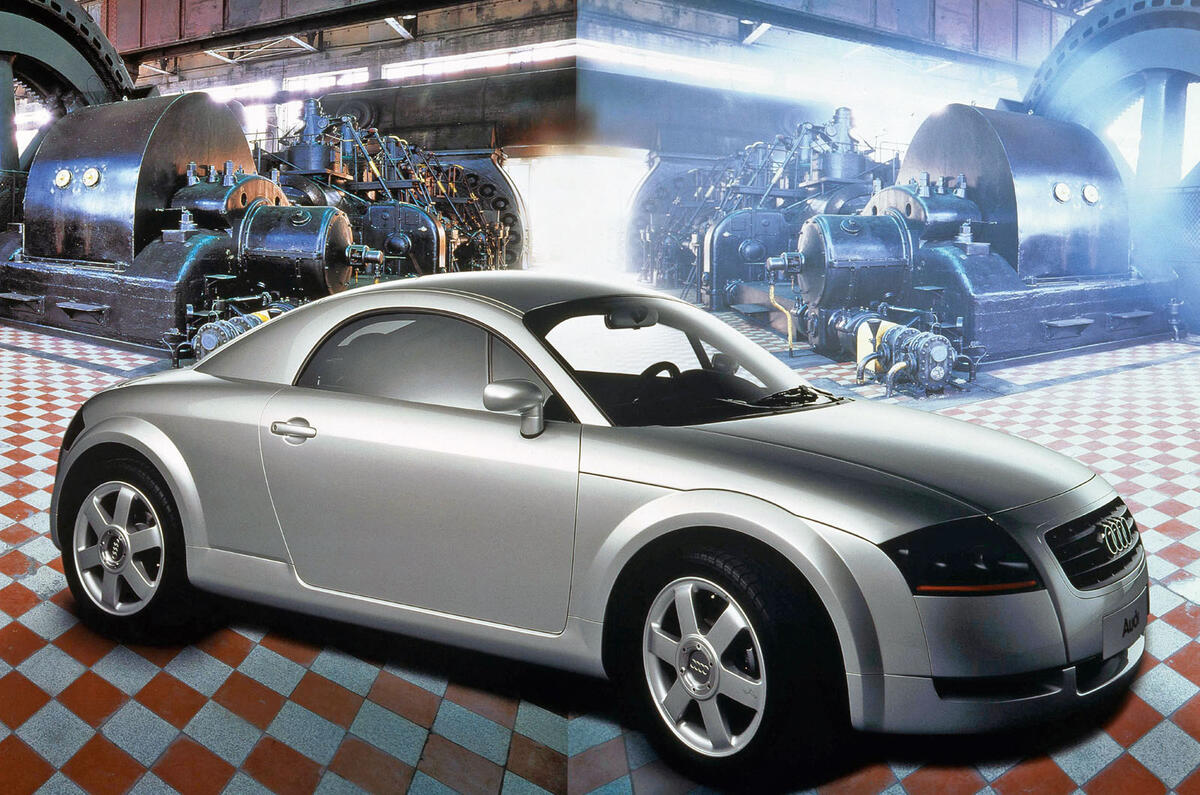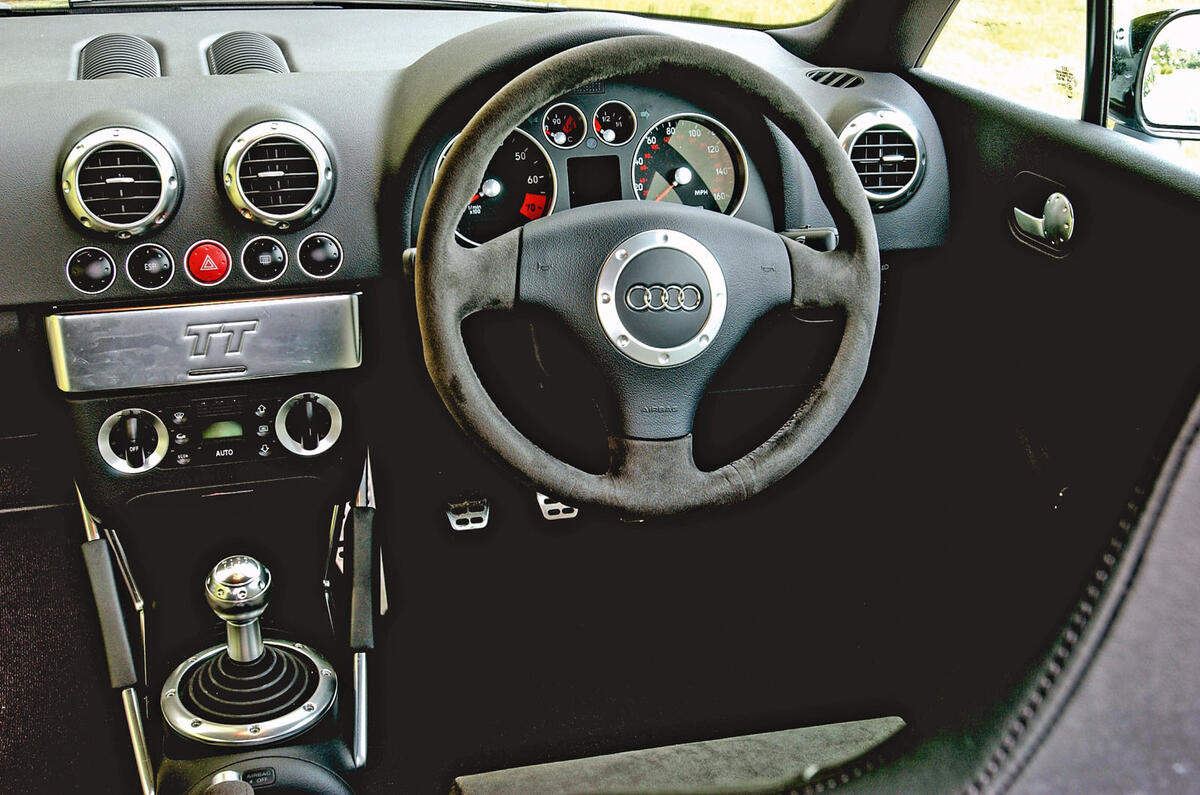I still remember the first time I drove an Audi TT. Not because it was a particularly exciting drive or because I went somewhere extraordinary. In fact, beyond knowing it wasn’t to the north of Scotland or across Route 66, I don’t recall exactly where I got in it, when it was, where I went or how long it took.
But what I do distinctly remember is being wowed by the Audi 's fantastic, immersive interior design: the letterbox view outwards; the cocooning high window line; the industrial/nautical inspiration for it all that meant it had air vents that looked like portholes and slabs of aluminium (real or, more likely, not) doing a decent job of looking like structural components.
Because, remember, Audi’s range at the time comprised the Audi A3, Audi A4, Audi A6 and Audi A8. It wasn’t a bad-looking lineup; the first-generation A4 (1994) had started something interesting, and the ’98 A6 was quite elegant – the first car I remember, too, having little red ambient lights in the roof, to cast a warm glow over the interior. Sounds like a right nightmare. But none of them was the TT.
Nothing was quite like the TT, even though there were other good-looking, even outlandish, cars at the time. There was the Ford Puma, the Alfa Romeo 156, and the ’90s was a decade that brought with it the Fiat Coupé and Alfa Romeo GTV.












Join the debate
Add your comment
Age catches up with the pool of buyers.
I am about to forward this article to a friend. Her husband just parted with his first love his 2013 Audi TT that was murdered by hurricane Florence in September of 2018. It was his first new car and he bought it while they were dating. Was the car they took on their honeymoon and brought their son home from the hospital. It was big enough to fit their daughter in as well when she arrived. But my friend out her foot down when they moved from New York to the Carolinas that she was not going to be trapped at home so the minivan was bought. Surprisingly the TT was killed by less than two feet of flood water none of it entering the cabin but totaling enough of the electronic components to write it off. A direct replacement was briefly considered but now sore back, knees and practical needs said Honda CRV.
We need to save the British car industry
Not have yet another Audi on the roads zzzzzzz
Tool
Then buy a Lotus and stop bitchin'.
always had issues with the tt
before the mk1 was launched i was hoping it would be somehow reminiscent of the old quattro, the proper one, but it wasn't. i'm not saying it was a bad car or that i didn't like it though. when i look at the current one i keep wishing it was an R4; mid-engined, with a lower bonnet line. Audi's boxter/elise. Also, the cabriolet with the roof up looks better than the coupe. It either needs re-inventing, or going back to the concept; as with the beetle, the plot's been lost a bit and the sales went with it.